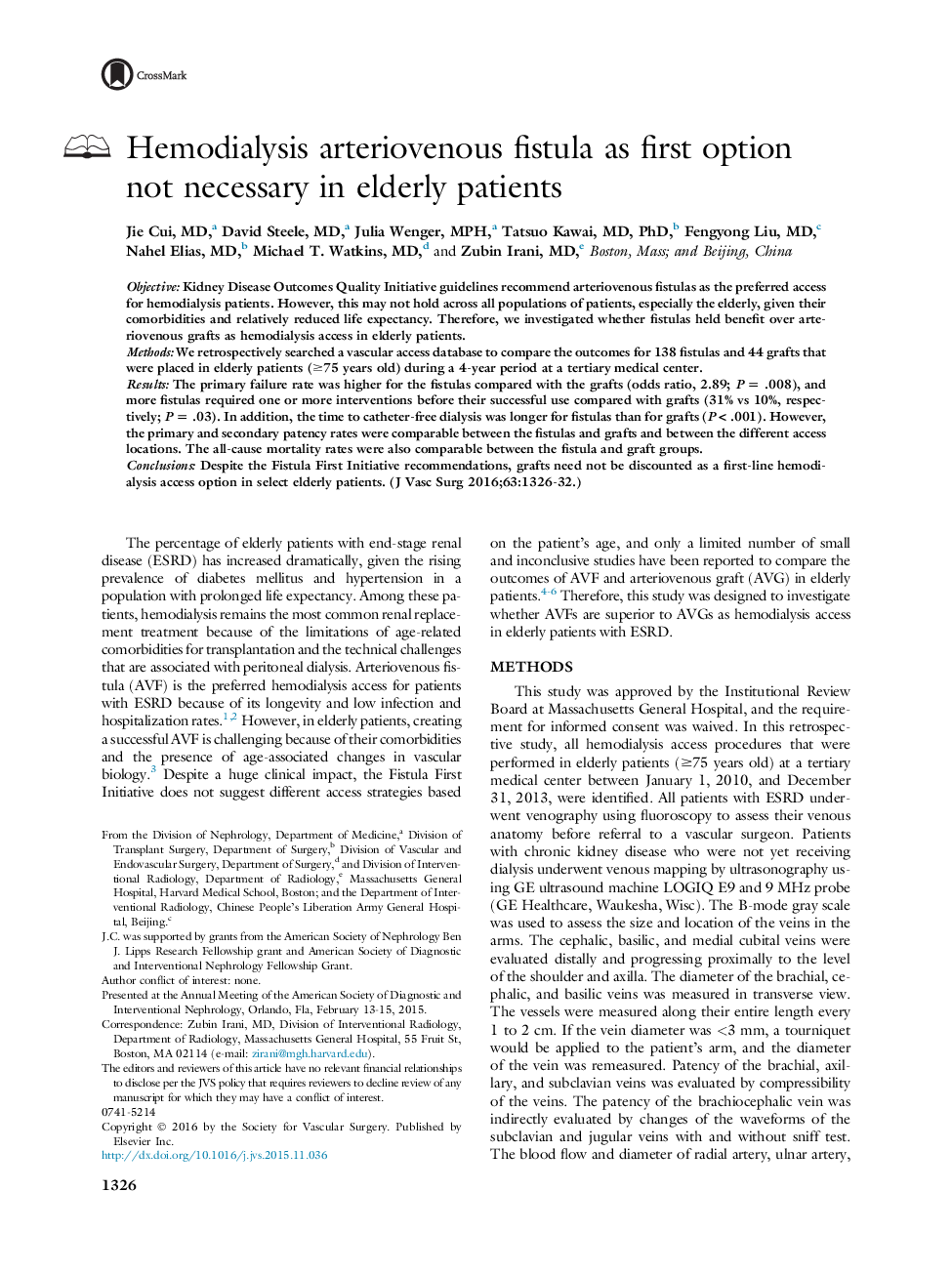| Article ID | Journal | Published Year | Pages | File Type |
|---|---|---|---|---|
| 5992999 | Journal of Vascular Surgery | 2016 | 7 Pages |
ObjectiveKidney Disease Outcomes Quality Initiative guidelines recommend arteriovenous fistulas as the preferred access for hemodialysis patients. However, this may not hold across all populations of patients, especially the elderly, given their comorbidities and relatively reduced life expectancy. Therefore, we investigated whether fistulas held benefit over arteriovenous grafts as hemodialysis access in elderly patients.MethodsWe retrospectively searched a vascular access database to compare the outcomes for 138 fistulas and 44 grafts that were placed in elderly patients (â¥75 years old) during a 4-year period at a tertiary medical center.ResultsThe primary failure rate was higher for the fistulas compared with the grafts (odds ratio, 2.89; P = .008), and more fistulas required one or more interventions before their successful use compared with grafts (31% vs 10%, respectively; P = .03). In addition, the time to catheter-free dialysis was longer for fistulas than for grafts (P < .001). However, the primary and secondary patency rates were comparable between the fistulas and grafts and between the different access locations. The all-cause mortality rates were also comparable between the fistula and graft groups.ConclusionsDespite the Fistula First Initiative recommendations, grafts need not be discounted as a first-line hemodialysis access option in select elderly patients.
